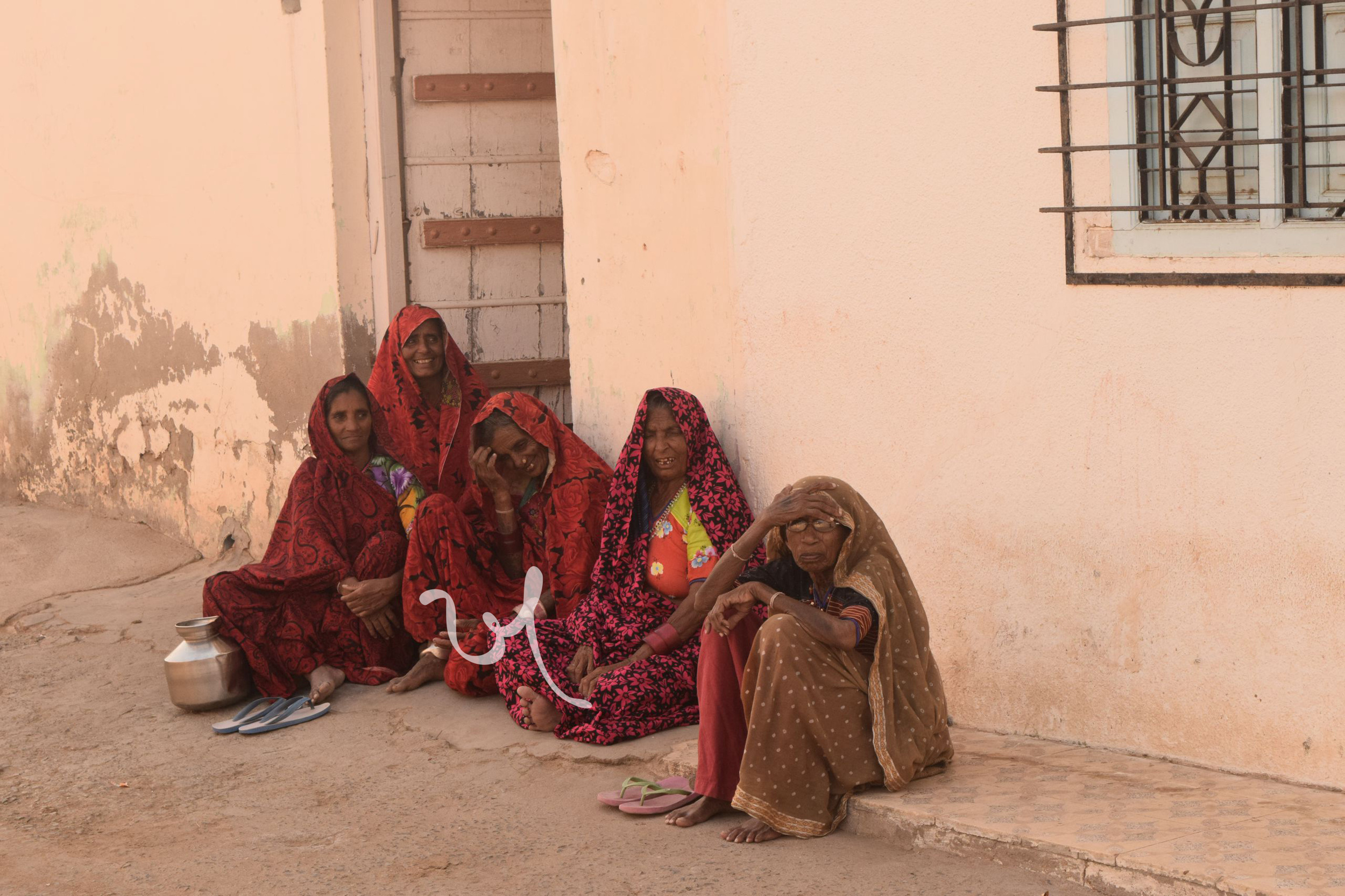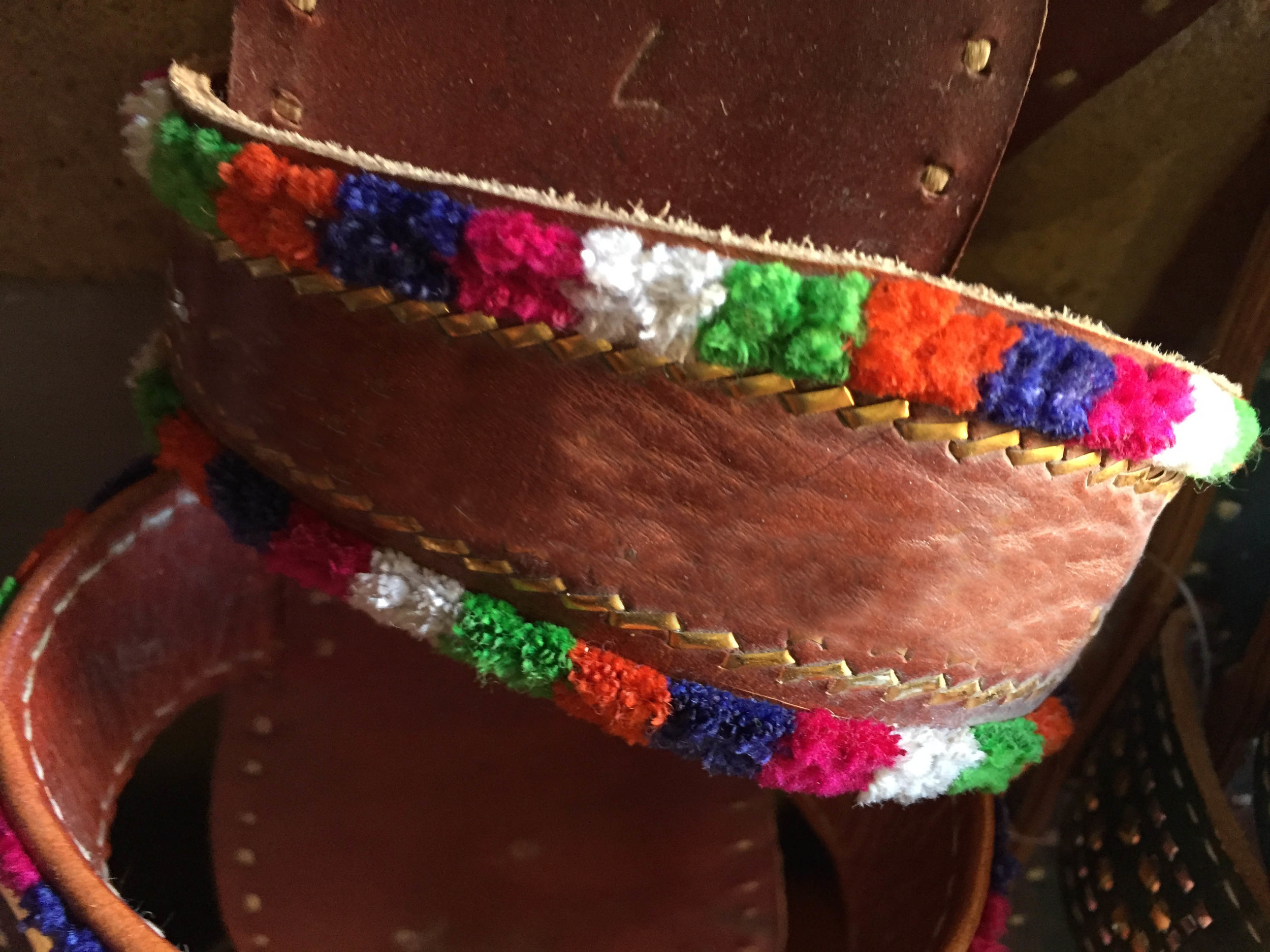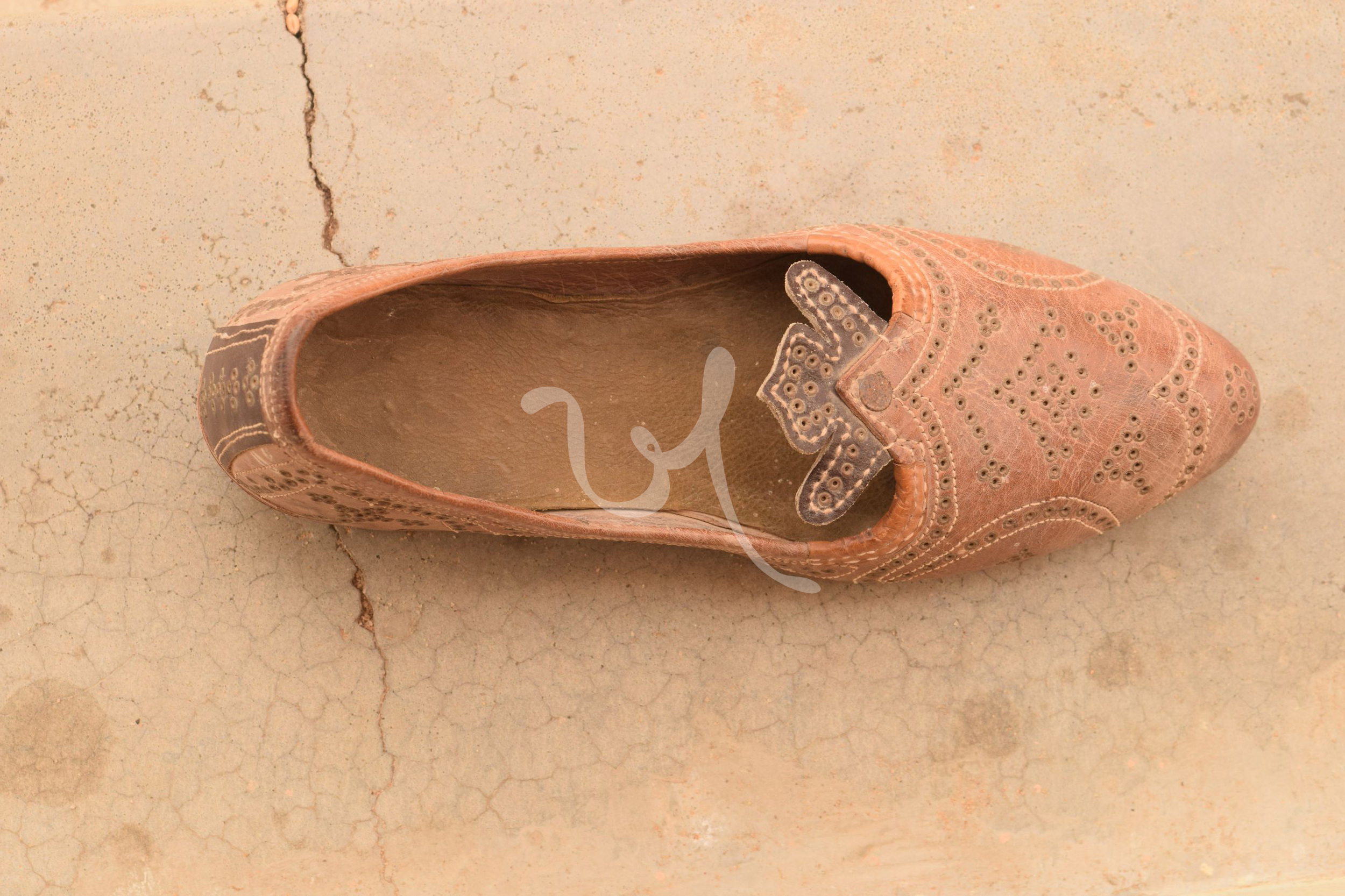A craft is born
The Meghwars devised ingenious ways to treat the hides of dead animals to transform them into products that all communities needed.
They were therefore closely connected to the Maldharis, the pastoralists of Kachchh, who needed their services when cattle died.
Maldharis walked long distances to graze their herds and to look for water in the arid climate of Banni, the grassland region of Kachchh. They needed sturdy shoes that could withstand harsh conditions while leather containers for drawing and storing water were a necessity.
Leather artisans evolved most of their products in response to the needs of the Maldharis, including the decorating and adorning of cattle. Other communities, such as the farming Ahirs and Patels had agrarian needs such as ropes for tying harvest and harness for the bull plough. In the earlier systems of economic exchange, cash was not the dominant currency. Rather a barter system revolved around what was available and needed. This system, known as hataar, was cleverly designed to ensure stability and mutual servicing through a relationship of social and material exchange.
Words from the artisans
Hataar started with the birth of a baby. It was customary for a Meghwar to make a taalki out of leather for the baby to rest its head on, to give its head a beautiful form. As the baby grew and started to put its feet on the ground, we made little shoes for her, called kaunsla. The cattle herders of Kachchh, the Maldharis, rewarded us for this with ghee or cattle. When the baby grew up and got married, we made the wedding shoes. This is how our craft and relationships endured. Decades ago, I made a pair of wedding shoes for a Maldhari for which he gave me a calf. Today I have twenty cows, all descended from that one calf so many years ago.
Traditional Tools
1. Kundi/Trena
Water is needed throughout in the process of making a leather product. It loosens and makes the leather flexible when wetted in short intervals. The tools are also wetted while sharpening. The artisan would need to keep water handy in some container. This was the trena. Earlier, it used to be a terracotta vessel.
2. Thokni
Used for hammering the pasted leather pieces to ensure an even surface and fastening with glue . The current metal thoknis were not used in Kachchh earlier but the Wadhas ( lacquered wood artisans) would make it out of Desi Baaval, Babul Acacia. It is also used for hitting on the punches while making cutout patterns.
3. Awl/Aal
Metal needle with a hook at the tip that helps to pull the thread while stitching. The artisans use a variety of bold stitches which gives a distinctive look to the leather products.
4. Aar/Aari
Metal needle to make holes on leather before stitching. This makes it easier to pass the thread through by hand.
5. Khaldi
Wooden piece that is used as a pencil for marking edges and base lines on the surface while cutting, folding and making of a piece.
6. Kaarab, Ohhard, Phanchro, Odaad
Wooden pieces that are meant to be placed at precise positions in a shoe towards the end of its making to give it the perfect form.
7. Rohi/Roi
Stone on which all the making happens from the pasting of leather to the sharpening of tools. The artisan would go and select the best stone with even and smooth surface from the river bank or a hill side.
Traditional Techniques
8. Punches
For punching and embossing patterns on leather. Earlier the artisans used to make similar cutwork patterns by hand with the help of the raapi but now the introduction of these punches has made the technique easier for the artisans.
9. Ekal
An iron structure with three extensions of variant sizes meant for the repairing and stitching of a shoe. These three units are used as a support for different parts like the toe cap and back of the shoe.
10. Khalda
Long thin wooden plank that is used as a support beneath the knees and hands while stitching leather.
11. Raapi/Rambhi
The skiving knife for cutting leather, this is an important tool in the process.
12. Patiya/Pharodi
The wooden plank on which the leather is cut with the raapi.
13. Pig hair needle
Pig hair is extremely thin and stiff making it suitable for doing a unique kind of stitch called Bakhiya that needed two threads to pass through a single hole at a time and pulled opposite to each other. This technique was used when metal needles were not in use and the fineness of the stitches produced was unique. This is no longer practiced now.
Thorni
This is a characteristic style of Kachchhi leather work. It is a technique of interlacing, stitching and cutting threads to make a pile-like colorful border. It is done for surface ornamentation, and was used mostly for special occasions. Traditionally, torni borders were made with silken threads for a delicate touch and were especially popular among women.
Rivets and nails
Nailing layers of leather pieces to make the sole was a traditional technique used by an artisan to avoid stitching. Punching phooddi or rivets and eyelets was a surface ornamentation prominently practiced in East Kachchh. This added to the tough and rugged look of the shoes and was particularly popular by the Rabari, Durbar and Gadhvi communities.
Guthai
Guthai, or braiding, was a traditional skill used both for aesthetics and strength. Twisting and braiding leather strings resulted in much stronger cords that could be used for products meant for carrying or holding heavy objects.
Kachchha dhaga silai
Dhaga, or strings, of raw yarn were polished with layers of bee wax and twisted to become thick and strong cords for stitching in leather work. This stitching was done for joining and overlapping pieces of leather for durability. Various stitching patterns were used to embellish the products for daily use.
Zari
Fine strips of real silver were used for embroidery stitches on leather as an ornate surface technique in the Sindh region. These products were made for special occasions like weddings and the silver was sourced from Sindh. The Banni grassland pastoralists, such as Mutwas, Haleputras, Hingorjas and Jats especially valued such fine detailing and intricacy.
To request access to more of our research on traditional Kachchhi leatherwork products, contact us: khamir.weavers@gmail.com










